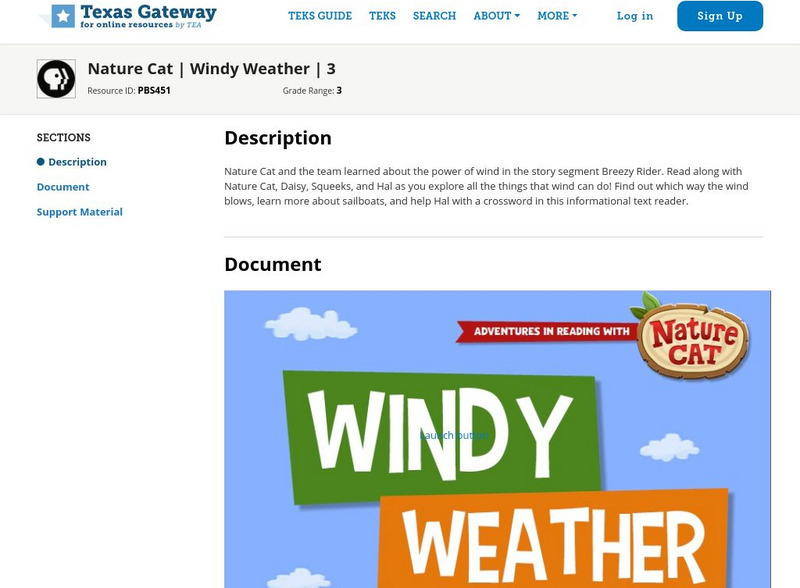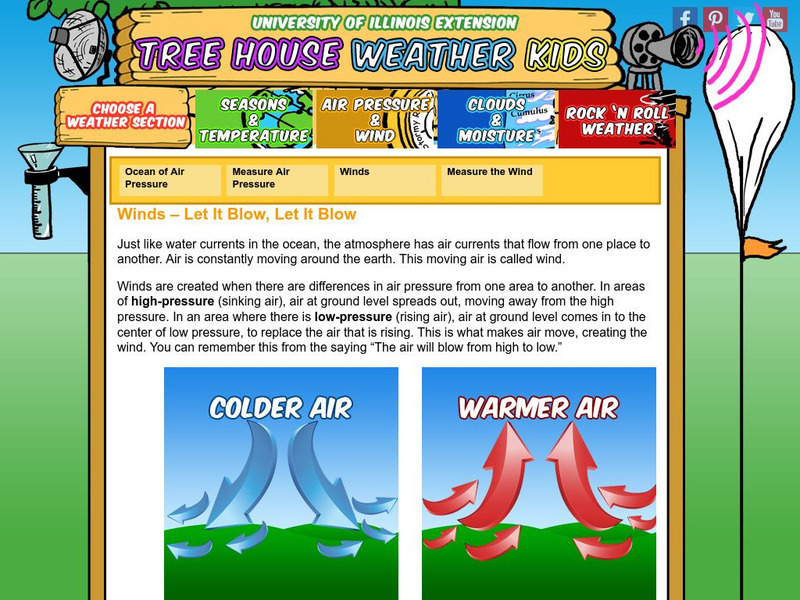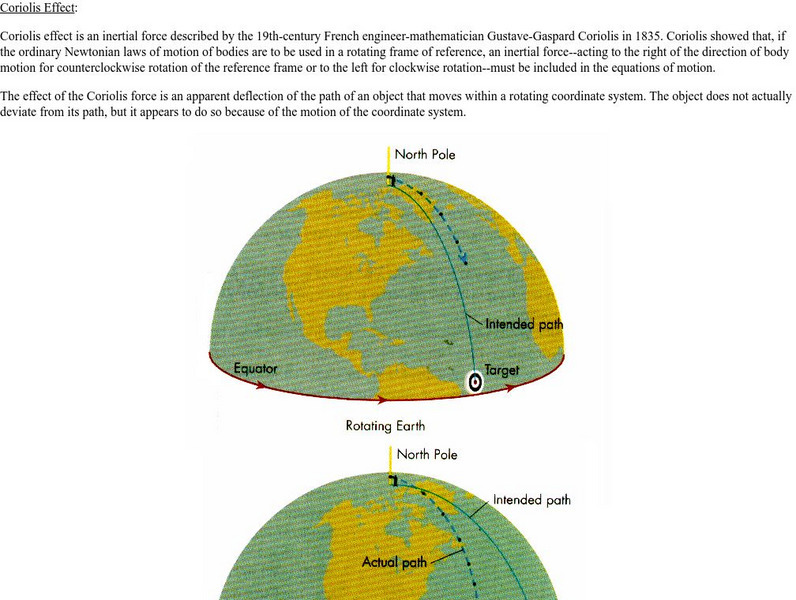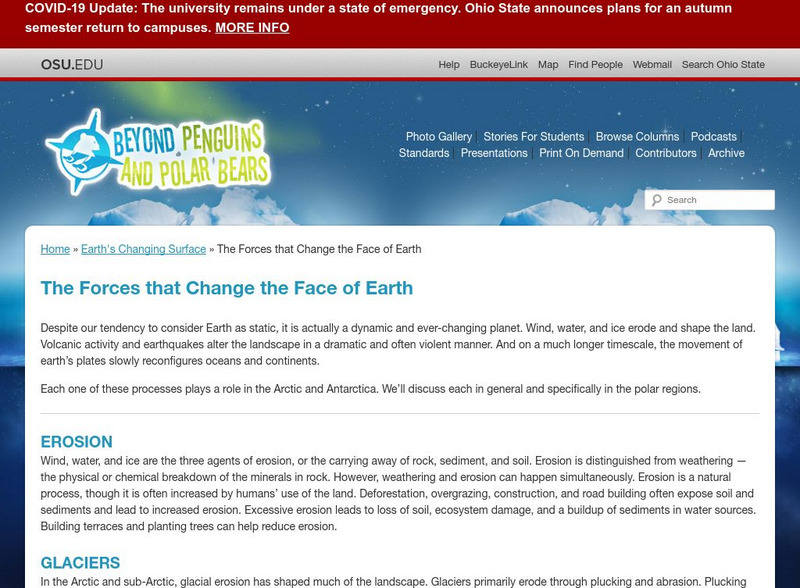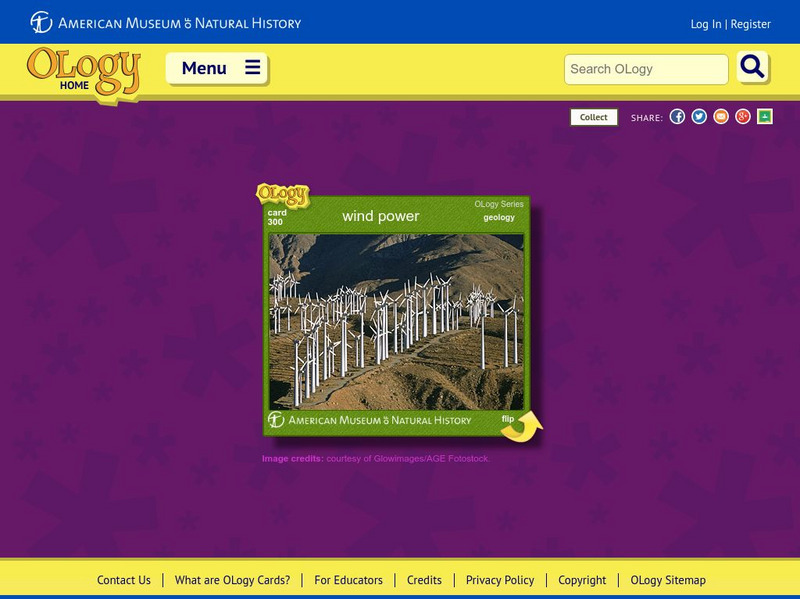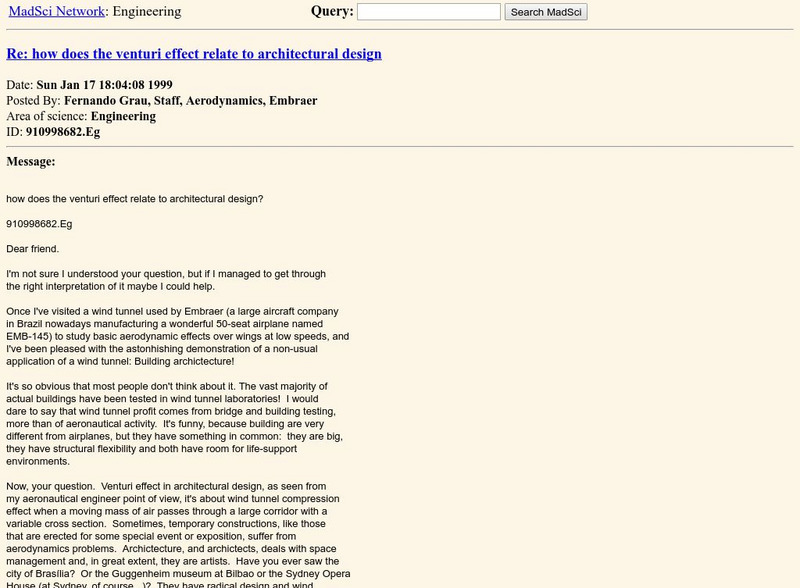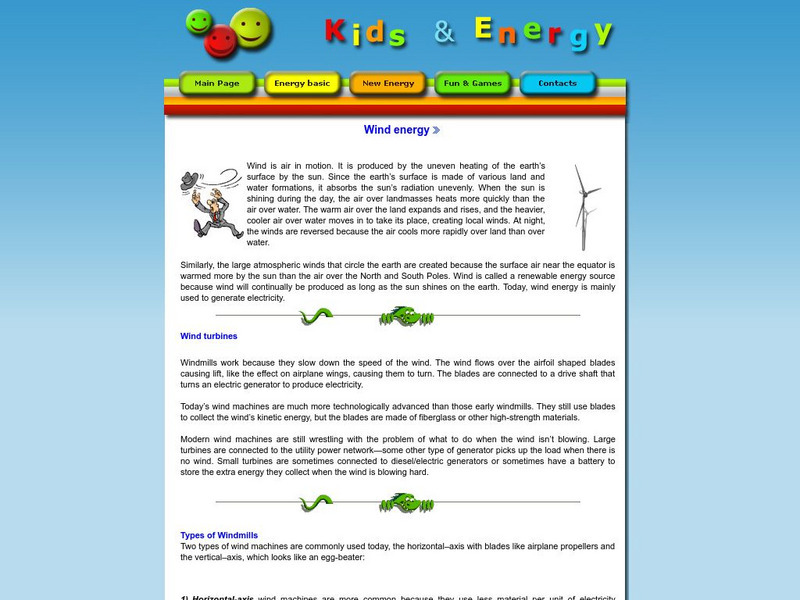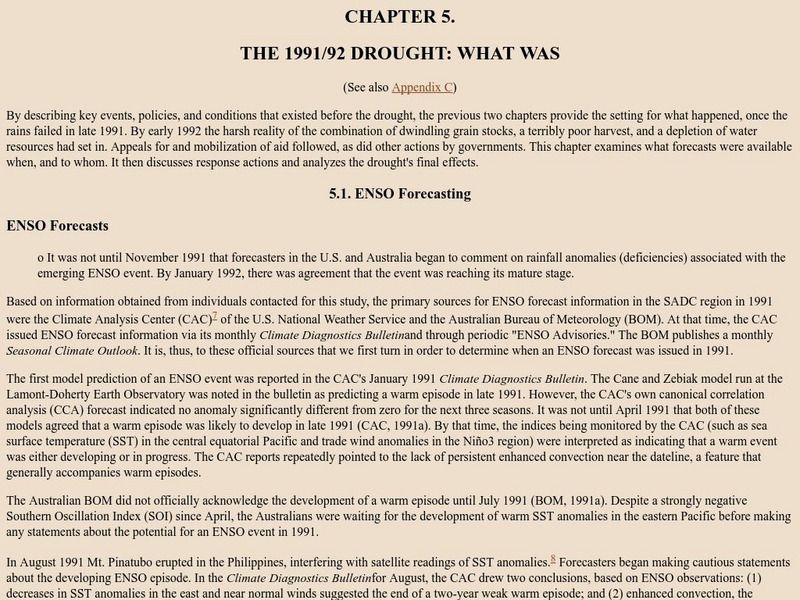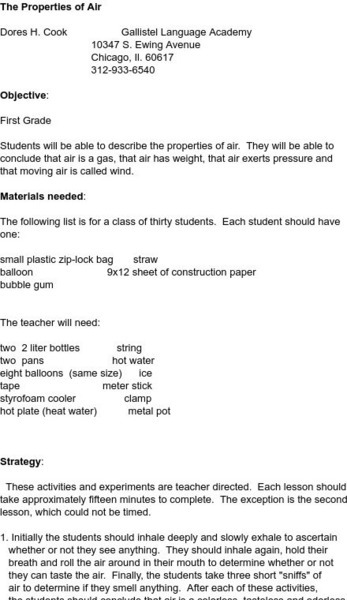Texas Education Agency
Texas Gateway: Nature Cat: Windy Weather: Grade 3
Nature Cat and the team learn about the power of wind in the story segment Breezy Rider. Read along with Nature Cat, Daisy, Squeeks, and Hal as you explore all the things that wind can do! Find out which way the wind blows, learn more...
Other
Lee Trampleasure: Science Education: Coriolis Effect
Examine three examples of the Coriolis Effect with reference to wind. The effect is that when an object is moving perpendicular to the rotation of a sphere the object will appear to travel in a curved line. Prevailing winds will look as...
The Franklin Institute
Franklin Institute Online: Keep Your Own Weather Journal
This site, which is provided for by the Franklin Institute Online, gives a format for keeping a weather journal.
PBS
Pbs Kids: Design Squad Game: Fidgit Power
Help Fidgitville by designing wind turbines that make electricity and keep the air and water clean.
NASA
Nasa: Global Wind Patterns
This site from NASA lists and defines global wind patterns. It features a graphic of these patterns and a self-test with answers.
University of Illinois
University of Illinois Extension: Tree House Weather Kids: Air Pressure and Wind: Winds: Let It Blow
Animated interactive helps young researchers understand how winds develop.
US Department of Energy
U.s. Department of Energy: Wind Energy
This short site provides an overview of wind power, along with links to technical information on wind power, history of wind power, and more.
University of Oregon
University of Oregon: Coriolis Effect
This site from the University of Oregon provides a great explanation of the Coriolis Effect and then gives several chart type examples to help the understanding of it.
Ohio State University
Beyond Penguins and Polar Bears: The Forces That Change the Face of Earth
Learn how different types of Earth processes change Earth's surface.
CK-12 Foundation
Ck 12: Fourth Grade Science: Earth Science: Erosion and Deposition by Wind
[Free Registration/Login may be required to access all resource tools.] Looks at how wind causes erosion, how sediments are deposited by wind, and ways to prevent wind erosion.
The Franklin Institute
Franklin Institute Online: Make Your Own Weather Vane
As part of a unit on gathering data about the weather, this lesson features instructions for making a simple weather vane.
Discovery Education
Discovery Education: Weather Maps
This site provides a lesson plan in which groups of students will each investigate a different type of weather map use for weather forecasting. Also includes discussion questions, extension ideas, and links to additional sites for more...
American Museum of Natural History
American Museum of Natural History: Wind Power O Logy Card
OLogy cards are like virtual baseball cards about all kinds of science topics. This card is about wind power. See if you can answer a few questions when you're done reading.
University Corporation for Atmospheric Research
Ucar: Wind
Wind is air moving from a place that has higher pressure to one that has lower pressure. Sometimes wind is just a light breeze and other times it is strong enough to blow the roofs off buildings.
University Corporation for Atmospheric Research
Ucar: How Weather Affects Air Quality
How is air pollution affected by weather? Some types of pollution are worse in the summer heat, while others are worse in cold winter weather.
CK-12 Foundation
Ck 12: Life Science: 12.29 Renewable Resources
Learn how some renewable resources contribute to alternative energy sources.
CK-12 Foundation
Ck 12: Life Science: 7.9 Seed Dispersal
Learn how plants disperse their seeds for successful reproduction.
PBS
Pbs Learning Media: Earth's Systems: Wind and Water Change Earth's Surface
Observe how wind and water reshape the face of Earth's surface with these slideshows. Students will use evidence from videos and images to observe and describe how wind and water contribute to natural events that are constantly reshaping...
PBS
Pbs Learning Media: A Look at Weather Factors: Interactive Lesson
Students learn about four factors that describe different types of weather -- temperature, wind, precipitation, and sunlight and clouds -- as they explore various weather conditions and find evidence that describes each type of weather...
Other
Boston Children's Museum: Beyong the Chalkboard: Nephoscopes
In this activity, children will create a tool called a nephoscope that helps scientists determine the direction that clouds are moving, which also tells them the direction that the wind is blowing above them.
MadSci Network
Mad Scientist Network: How the Venturi Effect Relates to Architectural Design
A question and answer regarding wind velocity and its effects on architectural design. A good site for applying the concept of the Venturi Effect.
Energy for Sustainable Development
Kinds and Energy: Wind Energy
Wind is air in motion. It is produced by the uneven heating of the earth's surface by the sun. Since the earth's surface is made of various land and water formations, it absorbs the sun's radiation unevenly. When the sun is shining...
University Corporation for Atmospheric Research
Ucar: The 1991/1992 Drought
This site from the University Corporation for Atmospheric Research offers information on drought and global climate conditions, with an explanation of the trade winds.
Science and Mathematics Initiative for Learning Enhancement (SMILE)
Smile: The Properties of Air
Lesson plan to teach properties of air. Students use balloons, plastic bottles, plastic bags and a meter stick to conclude that air is a gas that has weight, exerts pressure, and moves.


